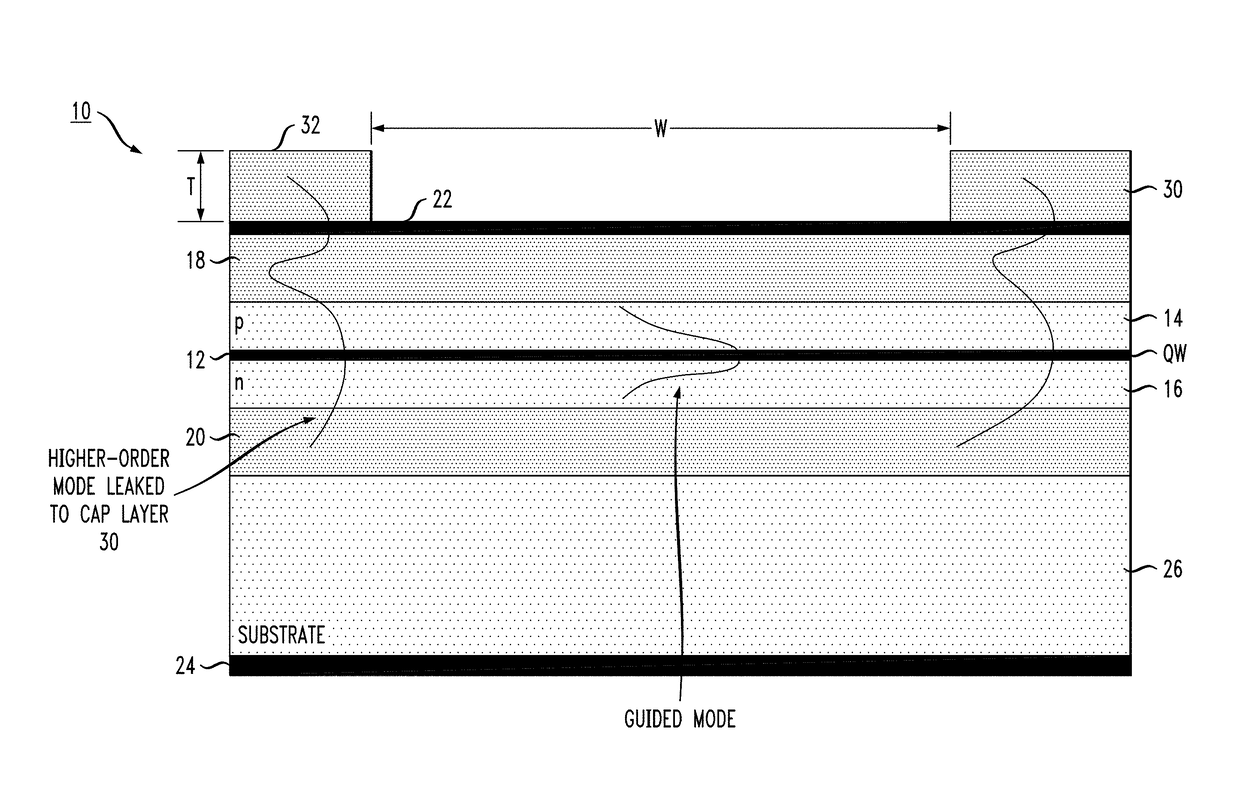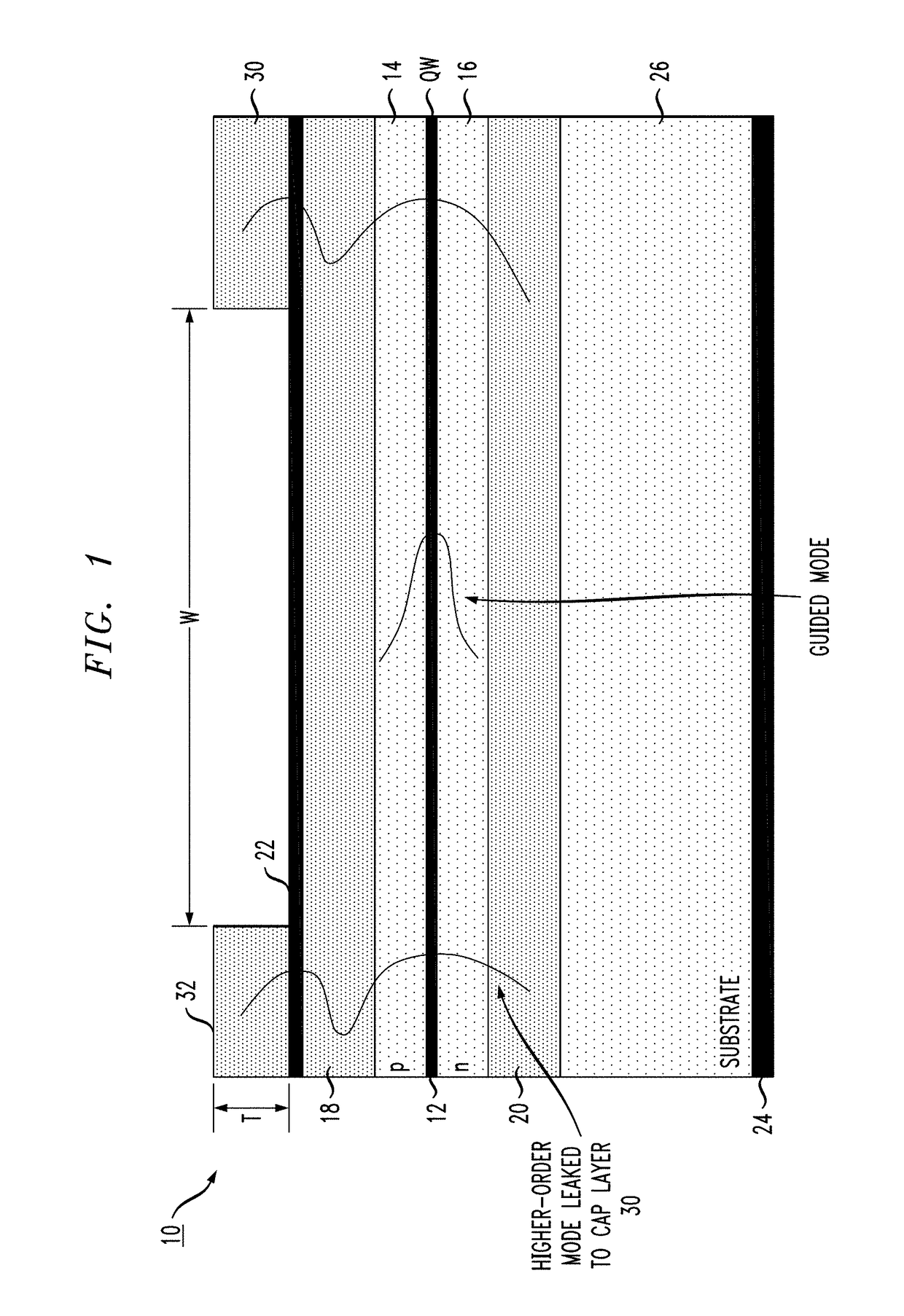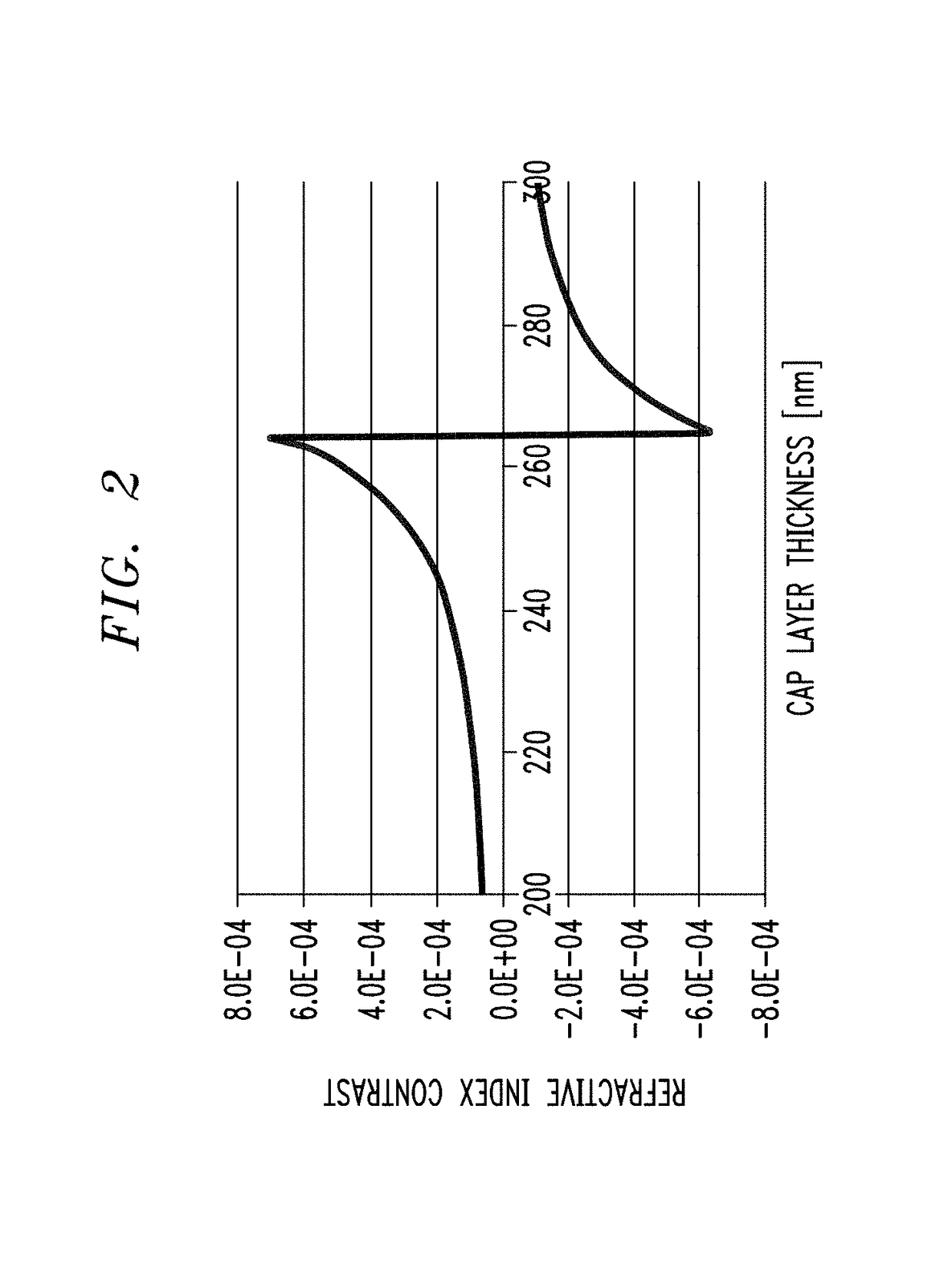Broad area laser including anti-guiding regions for higher-order lateral mode suppression
a laser diode and wide area technology, applied in lasers, laser details, electrical equipment, etc., can solve the problems of ever increasing lateral divergence, limited use of output beams in materials processing applications, and the ability of output beams to focus, so as to achieve high beam quality
- Summary
- Abstract
- Description
- Claims
- Application Information
AI Technical Summary
Benefits of technology
Problems solved by technology
Method used
Image
Examples
Embodiment Construction
[0017]The present invention relates to a broad area laser structure that overcomes problems associated with thermal lensing (i.e., the presence of a thermally-induced waveguide) and provides a high power, broad area laser with fewer supported laser modes and, therefore, a smaller lateral farfield than various prior art configurations. In accordance with the present invention, an anti-guiding layer of a material with a refractive index higher than that associated with desired mode is formed outside of the primary waveguide of the laser structure. The presence of this high refractive index anti-guiding layer, as explained below, optically “pulls” the undesired higher-order lateral modes out of the active region of the laser and into a region where they can “leak” out of the device and no longer impede its performance.
[0018]FIG. 1 illustrates the principles of the present invention, in this case based upon the use of an inverted ridge broad area laser design. A broad area laser 10 is s...
PUM
 Login to View More
Login to View More Abstract
Description
Claims
Application Information
 Login to View More
Login to View More - R&D
- Intellectual Property
- Life Sciences
- Materials
- Tech Scout
- Unparalleled Data Quality
- Higher Quality Content
- 60% Fewer Hallucinations
Browse by: Latest US Patents, China's latest patents, Technical Efficacy Thesaurus, Application Domain, Technology Topic, Popular Technical Reports.
© 2025 PatSnap. All rights reserved.Legal|Privacy policy|Modern Slavery Act Transparency Statement|Sitemap|About US| Contact US: help@patsnap.com



